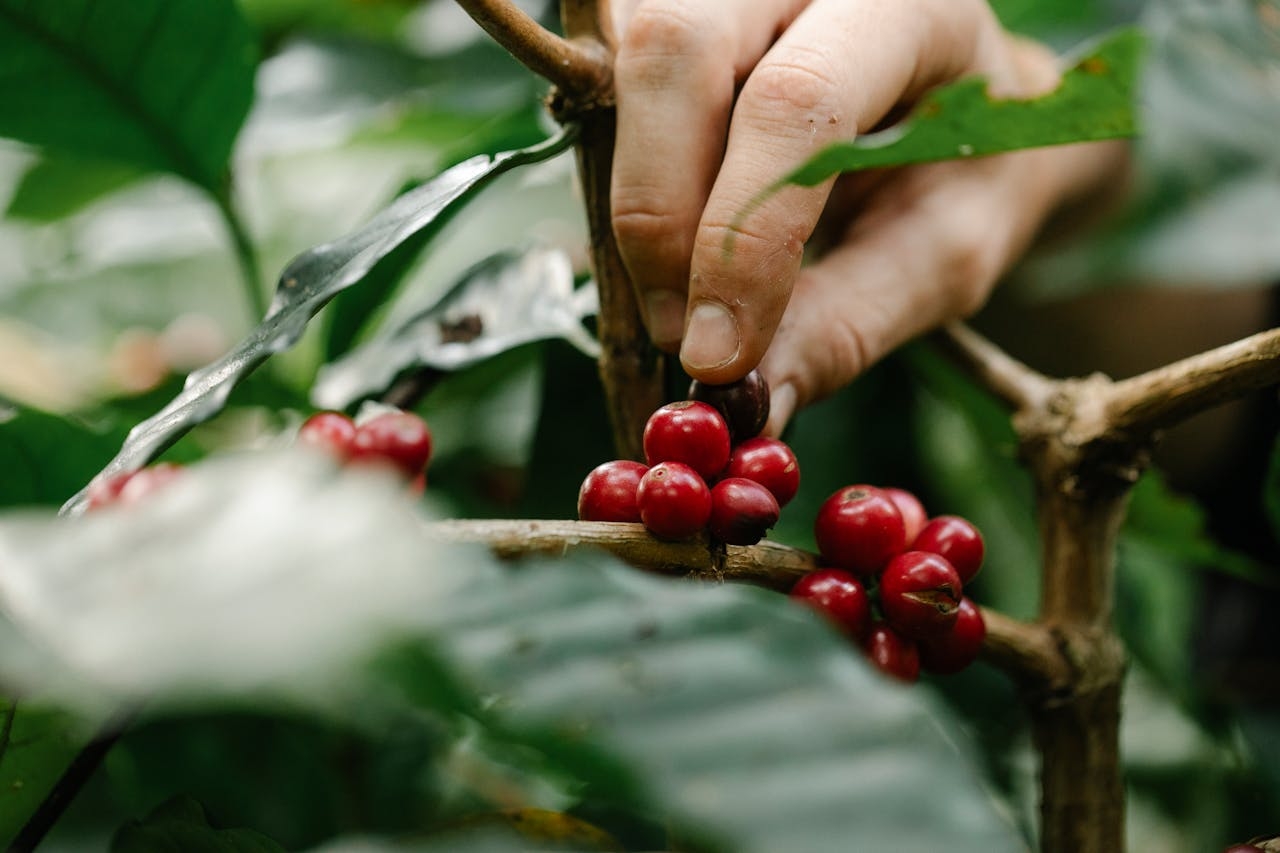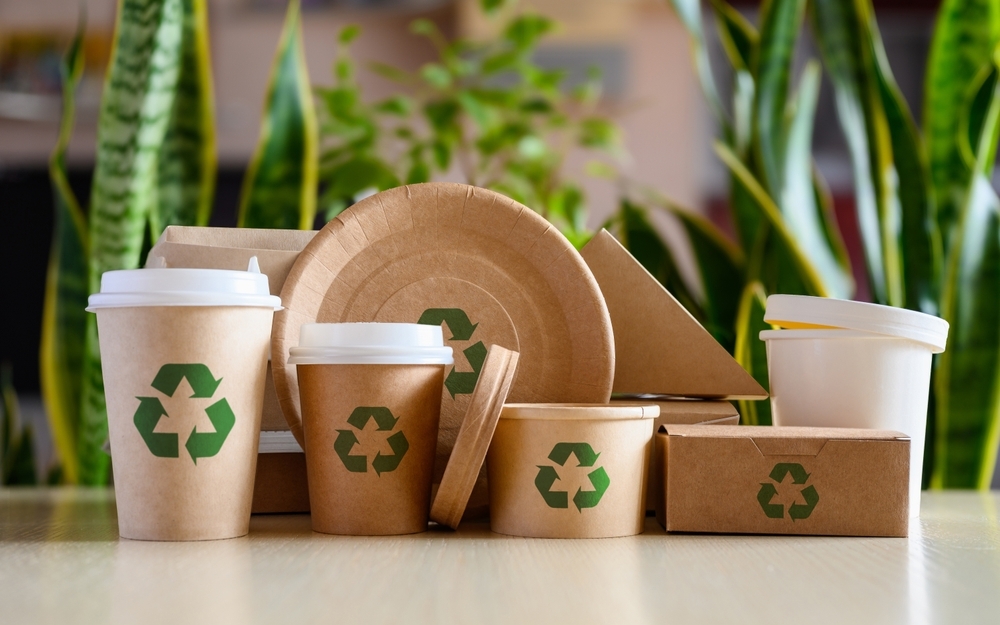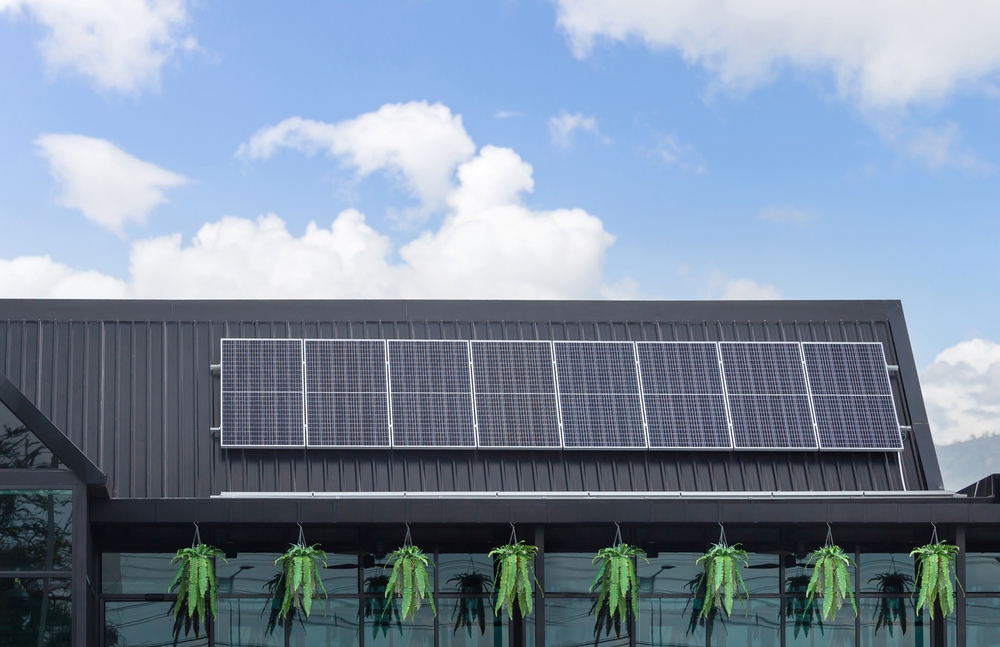Top Strategies for Achieving a Thriving Sustainable Cafe
By Hamza Benhlima · 6. March 2024
What makes a cafe truly sustainable?
Beyond organic brews, it’s the dedication to ethical sourcing, waste reduction, and environmental care.
This guide is your comprehensive resource for sustainable cafe practices, offering practical advice for cafe owners who want to make a positive impact on the environment, one coffee cup☕️ at a time.
Key Takeaways
- Choosing certified sustainable products supports ethical sourcing, conservation efforts, and the local economy—sip by sip, bite by bite.
- Embrace reusable containers—cafes can significantly reduce the environmental impact of disposable packaging by offering incentives for customers who bring their own containers, alongside providing compostable and recyclable options.
- Cafes can minimise waste through local recycling initiatives, upcycling furniture, and hosting sustainability events.
Embracing the Beans of Change
 coffee beans
coffee beans
The story of your coffee begins long before it reaches your cup. It starts in the lush plantations where coffee cherries ripen under the tropical sun. But not all coffee is created equal.
The choice of beans can have a significant impact on the environment and the communities that grow them.
When you choose coffee certified by Fair Trade, Rainforest Alliance, or Organic, you’re supporting ethical farming practices, biodiversity conservation, and a reduced carbon footprint.
Each sip you take contributes to a transformative movement within the coffee industry, steering it towards a more sustainable future.
The Journey of a Sustainable Bean
Sustainable coffee farming doesn’t just mean the beans are grown in a way that’s good for the environment.
It also means they’re grown in a way that’s good for the people who produce them. Practices such as shade-grown cultivation conserve biodiversity, preserve soil health, and reduce water usage.
This approach minimises the need for fertilisers and pesticides, curtailing environmental chemical pollution.
Coffee enjoyment goes beyond taste; it’s also a gift to the environment.
Partnering with Local Farmers
Sourcing coffee locally is another way to brew sustainability into your cup. It’s not just about reducing carbon emissions from transportation, although that’s a significant benefit.
This approach bolsters the local economy, deepens relationships, and nurtures a sense of community.
It’s about the pleasure of knowing that the coffee you enjoy comes from the hard work of farmers in your own backyard.
So, when you, as a cafe owner, choose to source locally for your own establishment, you’re not just making a choice for the environment.
You’re making a choice for your community, strengthening the local economy and forging a direct link between your patrons and the nearby farmers and producers.
Pouring Sustainability into Every Cup
Cafes can serve as refill stations, reducing reliance on plastic water bottles and attracting eco-conscious customers.
The next time you serve a customer, consider offering a discount for those bringing their own mugs or providing cups made from biodegradable materials.
This proactive approach can set a powerful example and initiate a wave of positive change in consumer behaviour.
Eco-Friendly Alternatives
While offering incentives for customers who bring their own mugs is an excellent way to promote a culture of reuse, it’s also vital to recognize that not everyone will remember to carry a mug at all times.
For these instances, cafes can step up by offering cups that are recyclable and biodegradable, ensuring that even the forgetful customer can still participate in the journey towards waste reduction.
When cafes provide a variety of options, including durable, reusable mugs for in-house enjoyment and eco-friendly disposable cups for the coffee on the go, they’re not just reducing waste.
They’re setting the stage for a future where sustainability is the norm and every choice made at the counter reflects a commitment to our planet’s health.
The Lifecycle of Your Coffee Cup
Consider the lifecycle of a coffee cup. From creation to disposal, each stage has an environmental impact.
By choosing cups made of 100% paper, which are more easily recyclable or biodegradable, we facilitate proper disposal and minimise environmental impact.
It’s not only about selecting the right cup but also about educating consumers on proper recycling practices.
By ensuring that cups, whether they are reusable, recyclable♻️, or biodegradable, are disposed of correctly, we can see that every cup counts towards a greener planet.
Minimising Waste, Maximising Impact
 paper ecofriendly tableware
paper ecofriendly tableware
Reducing waste isn’t just about choosing the right cup. It’s about rethinking the entire cafe experience.
From the coffee grounds to the food scraps, every aspect of a cafe’s operation can be optimised to minimise waste and maximise sustainability.
By creating a local recycling ecosystem, cafes can turn waste into resources, supporting environmental conservation.
Even the food we eat in cafes can be part of the solution. By adapting menus to use available ingredients and reduce food waste, cafes can ensure that nothing goes to waste.
Every step we take towards waste reduction brings us closer to a sustainable future.
The Second Life of Coffee Grounds
Did you know that your cup of coffee has a life after you’ve finished drinking it? We’re talking about the coffee grounds, which can be repurposed in innovative ways.
Some cafes use them to enrich the soil in their gardens, while others turn them into a substrate for growing mushrooms.
So, for cafe owners, remember – the journey of your coffee doesn’t end when your customer drains their cup. It’s just the beginning of a new cycle of sustainability within your establishment!
Reducing Food Waste
From the coffee beans to the food we eat, every ingredient in a cafe has a story to tell. And part of that story is about waste – or rather, the lack of it.
By adapting their menus to use available ingredients, cafes can significantly diminish food waste, supporting a sustainable operation. And it’s not just about reducing waste – it’s about rethinking it.
Cafes can introduce reusable food containers and compost bins for food scraps as part of their zero-waste practice.
Powering Your Cafe Sustainably
 renewable energy
renewable energy
From the espresso machine that brews your coffee to the lights that illuminate the cafe, energy is a crucial part of the cafe experience.
But the energy we use doesn’t have to harm the planet. By investing in energy-efficient appliances and adopting renewable energy sources, cafes can significantly cut their reliance on non-renewable energy.
Not only does this reduce their carbon footprint, but it also enhances their brand image and meets the preferences of today’s eco-conscious consumers.
Remember, as you step into a cafe, the energy fueling your coffee experience is also contributing to a greener future.
Energy-Saving Appliances
Energy-efficient appliances aren’t just good for the planet – they’re also good for business. By reducing energy consumption, they can cut costs and improve profitability.
From energy-efficient coffee machines to A-rated refrigeration units, every appliance in a cafe can be optimised to save energy and reduce environmental impact.
And it’s not just about the appliances. Proper insulation in buildings, like using double or triple-glazed windows, can also minimise energy use.
Cultivating a Green Interior
 eco-friendly cafe house
eco-friendly cafe house
From the furniture we sit on to the decor that adorns the walls, the interior of a cafe plays a crucial role in creating a cosy and welcoming atmosphere.
But a cafe’s interior can be more than just pleasing to the eye – it can also be kind to the planet.
By using upcycled furniture and eco-friendly materials, cafes can create a warm and inviting space that also supports sustainability.
Think vintage chairs made from coffee sacks, tables made from wood crates, and decor made from reclaimed wood.
Each piece tells a story of sustainability, making your coffee experience all the more meaningful.
Furnishing with a Conscience
Sustainable furniture isn’t just about being kind to the planet – it’s also about being kind to the people who use it.
Eco-friendly🌱 furniture materials like sustainably sourced wood, recycled plastics, and recycled metals not only reduce environmental impact, but they also provide a comfortable and stylish setting for cafe patrons.
Green Spaces Inside and Out
The beauty of nature doesn’t have to be confined to the great outdoors. By incorporating indoor plants and green spaces, cafes can create a tranquil and refreshing atmosphere that benefits both their customers and the environment.
From air-purifying indoor plants to green rooftops, these eco-friendly design elements can improve air quality, reduce heat loss, and provide a calming effect for customers.
It’s more than just decoration – it’s a testament to the cafés sustainability.
Fostering Sustainable Habits in Customers
Sustainability doesn’t stop at the cafe’s door. It extends to the habits and behaviours of the customers who frequent the cafe.
By offering incentives for sustainable choices and educating customers about environmental issues, cafes can foster a community of environmentally conscious consumers, promoting sustainable practices.
Incentives for Sustainability
Incentives can be a powerful tool for promoting sustainable habits. From discounts for customers who bring their own mugs to loyalty programs that reward sustainable choices, cafes can use a range of strategies to encourage customers to go green.
But it’s not just about the incentives themselves. It’s also about the message they send.
By offering incentives for sustainability, cafes are showing their commitment to the environment and encouraging their customers to adopt environmentally friendly practices.
Spreading Awareness Through Events
Sometimes, the best way to encourage sustainable habits is to bring people together.
By hosting sustainability-themed events and workshops, cafes can raise awareness about environmental issues and inspire their customers to take action.
These events can range from discussions on sustainability🌱 to collaborative projects that make a tangible difference in the community.
Why not host the next sustainability event at your local cafe? It’s a fantastic opportunity to engage with the community, share valuable knowledge, and contribute to a collective effort for a greener future.
Refreshing Choices: Dairy Alternatives and More
The choice of milk in your latte or cappuccino can have more impact than you might think.
By offering vegan milk alternatives, cafes can cater to a range of dietary preferences while also reducing their carbon footprint.
From soy and almond to oat and hazelnut, these plant-based options provide a delicious and eco-friendly alternative to dairy milk.
Cafes can also reduce their environmental impact by sourcing locally grown produce and introducing vegan and vegetarian menu options.
So, whether you’re a vegan, a vegetarian, or just someone who cares about the planet, you’ll find plenty of refreshing choices at a sustainable cafe.
The Rise of Oat Milk and Other Alternatives
Among the many plant-based milk options, oat milk stands out for its creamy texture and neutral taste.
It’s a favourite among baristas for its stability when frothed, making it perfect for latte art. But oat milk isn’t just good for your coffee – it’s also good for the planet.
It uses less water and produces less greenhouse gas emissions than dairy milk, making it a sustainable choice for your cup of coffee.
Farm-to-Table: Growing Your Own Produce
Imagine biting into a fresh, juicy tomato that was grown right in the cafe’s own backyard. Or sipping a latte made with milk from a local dairy.
By growing their own produce or sourcing local produce, cafes can serve up fresher, tastier dishes while also reducing their carbon footprint.
Plus, supporting local agriculture boosts the local economy and enriches cafe-supplier relationships.
Reinventing Packaging and Utensils
Take a moment to think about the packaging and utensils you use when you grab a takeaway coffee or a sandwich.
These items may seem small, but they can add up to a big environmental impact. But what if we could reinvent them?
From bamboo straws to compostable cups, there are many eco-friendly alternatives to traditional packaging and utensils. Some options include:
- Bamboo straws
- Biodegradable paper cups
- Biodegradable cutlery
- Paper or cardboard takeout containers
Each takeaway order presents an opportunity to choose sustainability, right down to the packaging and utensils.
Takeaway the Sustainable Way
Takeaway doesn’t have to mean take-out the environment. With biodegradable takeaway cups and packaging, cafes can offer convenient takeaway options that are also kind to the planet.
These materials are made from plants, not fossil fuels, and they can decompose back into the earth at the end of their life.
Eco-friendly packaging is a simple way to enjoy the convenience of takeaway without the environmental guilt.
Nurturing Community and Environment Together
Being sustainable isn’t just about doing good for the environment – it’s also about doing good for the community.
By creating a local recycling ecosystem and engaging in charitable and environmental initiatives, cafes can strengthen their ties with the community while also promoting sustainability.
As a cafe owner, remember that you are more than just a business operator; you are a pivotal figure in a community that’s collectively striving for a cleaner, greener future.
Becoming a Hub for Eco-Friendly Living
A cafe is more than just a place to enjoy a cup of coffee – it can also be a hub for eco-friendly living.
By offering a platform for local artists, musicians, and performers, cafes can contribute to the cultural vibrancy of their community while also promoting sustainability.
The art, music, and sense of community that pervades the atmosphere reflect the cafe’s dedication to fostering both the local community and environmental well-being.
Summary
Running a sustainable cafe isn’t just about serving great coffee – it’s about making every aspect of the cafe experience more sustainable.
From the beans that go into your espresso to the cup that holds it, from the energy that powers the cafe to the way waste is managed, every detail matters.
It’s about creating a space that not only serves delicious food and drinks but also nurtures a community of conscious consumers.
Frequently Asked Questions
What is a sustainable cafe?
A sustainable cafe focuses on using smart, eco-friendly equipment, sourcing local produce, and reducing carbon emissions from transportation. By making these choices, the cafe minimises its environmental impact and promotes a greener way of operating.
How do you build a sustainable cafe?
Build a sustainable cafe by following these tips: limit water usage, support local farmers, reduce energy consumption, switch to eco-friendly products, and offer vegetarian options. Sustainability is the new black, darling, so let’s make your cafe the trendiest green spot in town!
How can coffee shops become more sustainable?
To make your coffee shop more sustainable, switch to eco-friendly alternatives like paper straws, wooden stirrers, or compostable cups and lids. It’s an easy way to reduce your carbon footprint without sacrificing convenience!
What is an eco cafe?
An eco cafe is a place where you can explore sustainable living and ethical principles while enjoying a cup of coffee. It’s a space for sharing ideas and learning about environmentally-friendly practices. So, grab a seat and let’s sip some eco-friendly knowledge!
How can cafes reduce waste?
Cafes can reduce waste by offering incentives for customers to bring their own mugs or use compostable cups and employing creative menu planning to minimise food waste. So, let’s toast to a more sustainable coffee experience!

